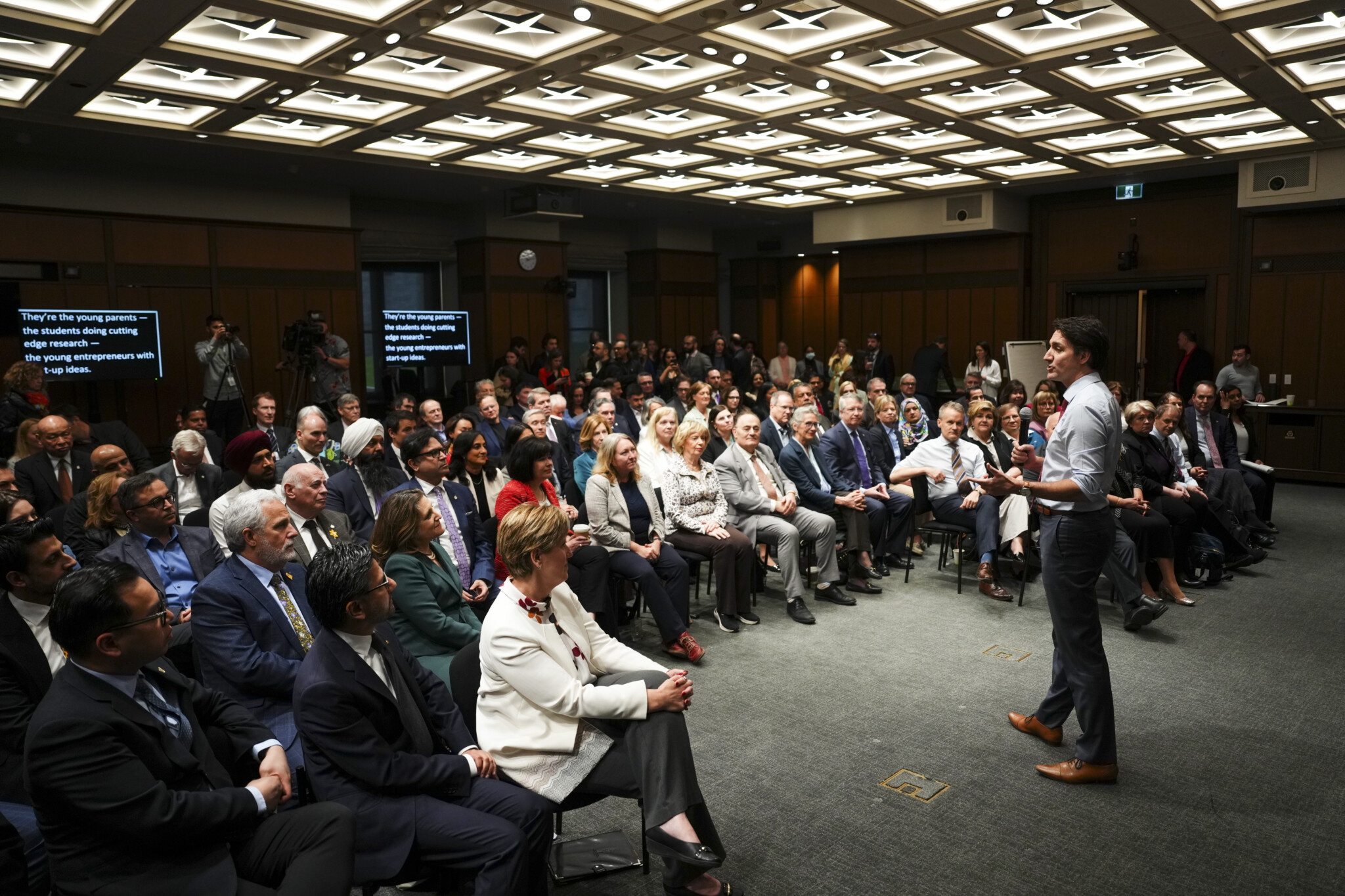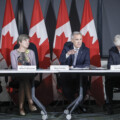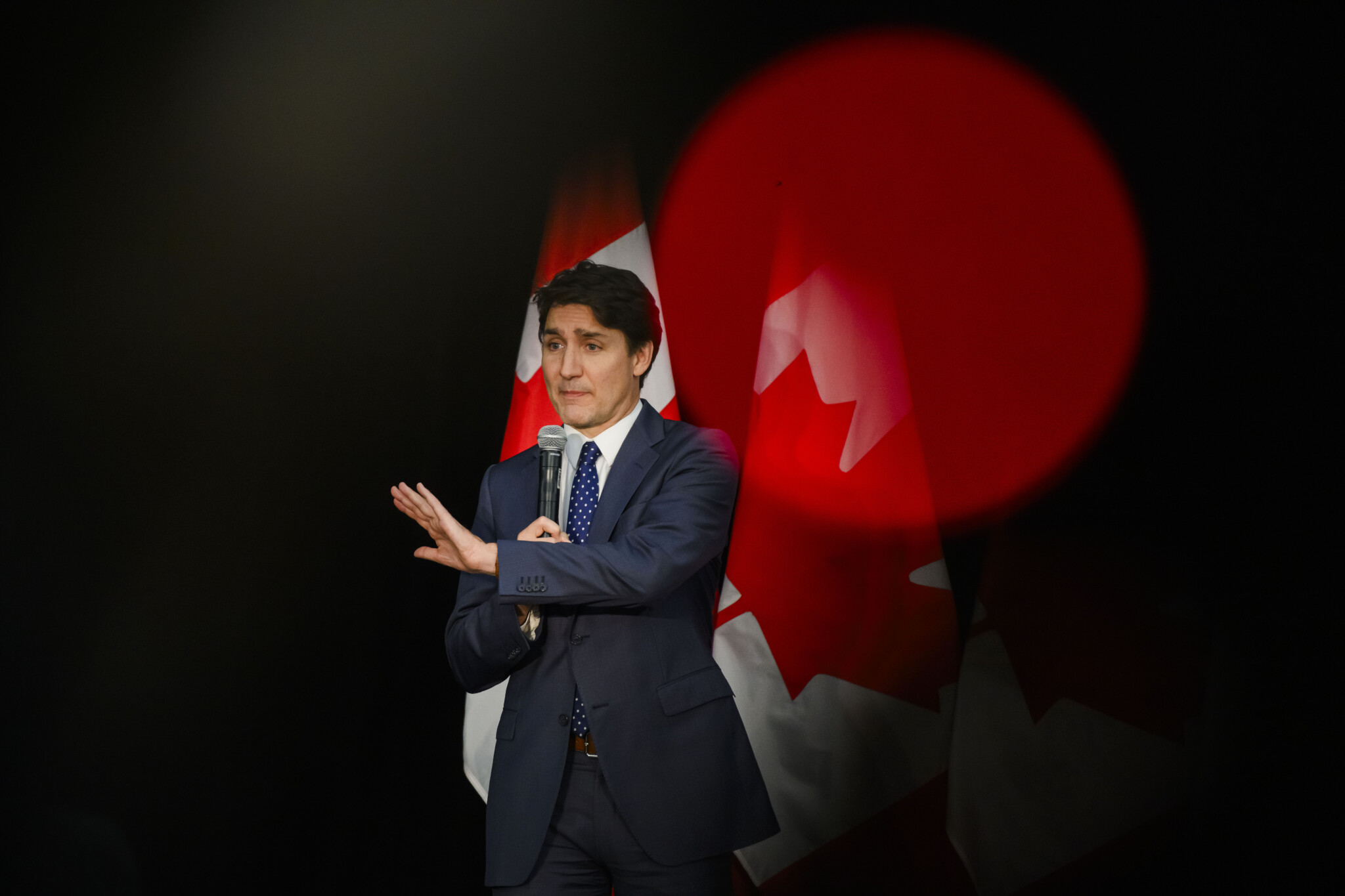Change. You capricious son of a bitch.
Sometimes it will sweep you to power atop a tidal wave of enthusiasm, applause, and anticipation. But just as easily, it can bury you beneath the hard clay of political history.
When change rallies to your side, every move becomes genius. Every word, a song. Every choice, predestined. There is no more intoxicating or reliable campaign slogan. No force more elemental or unbeatable. Like charging into battle holding Hercules’ club.
But when change turns its back on you, politics can become orphan-lonely. Every decision is damned. Every appearance is ridiculous. Each adjustment is desperate. Change can chew you up, spit you out, and threaten your parliamentary pension.
Most political leaders encounter change of one sort or another. A few last long enough to experience both its shine and shade.
That is where Justin Trudeau now stands. Nine years ago, change was his warmest friend. Today, he suffers its coldest shoulder.
Until June 24th, it was at least partially possible for Liberals to dismiss bad polls as an untested prospect. No longer. The knee-weakening loss of Toronto-St. Paul’s removes any such pretense. For Liberals, it’s as bad as it looks. Worse, maybe.
So, what is to be done?
The answer will only be found in the concrete truth of change. Canadians want it. They will have it. The only practical decision left for Liberals is whether they will even attempt to provide it.
The Toronto-St. Paul’s results exposed the madness of any strategy designed to ignore change. To campaign on the same message, using the same tools and highlighting the same policies is doomed to disaster. If the Liberals hug the status quo, they will squeeze away their own electoral life.
To win—to have any hope of even competing to win—the Liberals must embrace change. To avoid becoming its victim, they must become its vehicle.
That won’t be easy. Today, the party has only three options left.
First, the prime minister could leave—and do so soon, to give his successor time to renew and recompete. It is rare for aging governments to scratch their way back, even under a new leader. But not unheard of.
In 2014, I watched Kathleen Wynne up close as she led the Ontario Liberals to an unexpected majority victory only a year after Dalton McGuinty’s departure. She succeeded because she spent every day embracing and embodying change. She took charge. She made choices. She defined her opponent as too risky. And she wrestled away the mantle of change. Yes, four years later, it ended in punishing terms but that does not render her early example invalid.
Second, Trudeau could leave—but do so later, providing his successor with little time or latitude. Many observers discount this option as ruinous. The track record of governments forced into a dying-days leadership change is not encouraging. Many point to what unfolded following the exits of Pierre Trudeau and Brian Mulroney.
But is it quite that clear-cut?
I was on Parliament Hill working for the Chretien Liberals in 1993 when Mulroney was succeeded by Kim Campbell. I recall crisply the explosion of interest that greeted her arrival as our first-ever woman prime minister. Hanging out in the communications offices of the leader of the Opposition, we watched Campbell tour the country, connect with Canadians, and channel change. Her numbers soared, putting the Progressive Conservatives back on top. Frankly, she had us shit-scared. At least for a time, Campbell won the fight for change. She just turned out to be unable to keep hold of it.

Prime Minister Justin Trudeau addresses caucus during a meeting on Parliament Hill in Ottawa on Wednesday, April 17, 2024. Sean Kilpatrick/The Canadian Press.
None of that means Trudeau can leave at closing time without severely handicapping his own party. But neither does it mean a historic beating is absolutely guaranteed.
The final and most pressing option is to deliver change before—or as an alternative to—Trudeau leaving. It’s a scenario of particular importance to Liberals because, as the prime minister has insisted since the Toronto-St. Paul’s loss, he has no intention of quitting.
Is there any strategy available to the Liberals to present themselves as standing for genuine change, even with Trudeau remaining in office? What actions would be required to capture the notice, much less the approval, of such a deeply skeptical public?
Any such effort would have to be substantive—bromides about “listening harder” merely agitate voters who feel regularly patronized by the communications of Trudeau and his cabinet. It would have to be responsive—meaning major policy change and change to major policies. And it would have to be visibly hard on the government—because for Canadians to believe the change is real, they must feel it comes at a clear cost. A population this angry wants to see you squirm.
In practice, such an agenda would have to start with a volte-face on the carbon tax. It may be the government’s signature policy, but it is now incompatible with public attitudes and political survival. To engineer its end, Trudeau should offer up more change. Mark Carney has sat on the sidelines for too long. Bring him in. Make him finance minister. Charge him with finding a replacement that will provide both relief to Canadian consumers and credibility for Canada’s climate program.
Freeland would remain as deputy prime minister and be tasked with the nation’s other insistent economic priority: preparing for a United States that seems ready to re-elect Donald Trump. An end to the Supply and Confidence Agreement with the NDP, a lowering of immigration targets, and a national initiative to boost the number of family doctors are all examples of other, additional policies that could signal a sincere desire to change.
Whatever the specifics, the desired formula is inescapable: Liberals must start undoing some things, begin doing other things, and better communicate the most important things.
Finally, if there’s a God in partisan political heaven, all of this would surely be accompanied by a well-financed, withering suite of ads aimed directly at boosting Pierre Poilievre’s negatives.
Such an approach might not work. Candidly, it’s possible nothing will. In 2018, Kathleen Wynne carried a program of change into the Ontario election, including a popular proposal to raise the minimum wage. Voters liked many of her policies but still voted no loudly. Trudeau may find himself similarly unable to melt public antipathy.
But for the Liberals right now, the unpardonable mistake would be to ignore all three options. If Trudeau declines to leave, he cannot also refuse to implement change. To do nothing and pretend that something other than calamitous defeat will result is pure delusion.
No matter which historical precedent you follow—Pierre Trudeau, Brian Mulroney, Kim Campell, or Kathleen Wynne—the lesson is always the same: change will out. It will have its way. It will always win.
For the Liberals, change may not be easy. It may not be their best hope. Or much of any hope. But along with hard work, it has become their only hope.
Scott Reid is a principal and co-founder of Feschuk.Reid and commentator for CTV/Bell Media. He previously served as communications director for Prime…
Recommended for You

David Eby has one big pipeline-sized problem

‘Those left behind feel betrayed’: BBC chief correspondent on Afghanistan’s fate

How much is Canada spending on health care—and where is the money going?

The Alberta-Ottawa energy agreement sounds impressive—but how excited should we really be?




